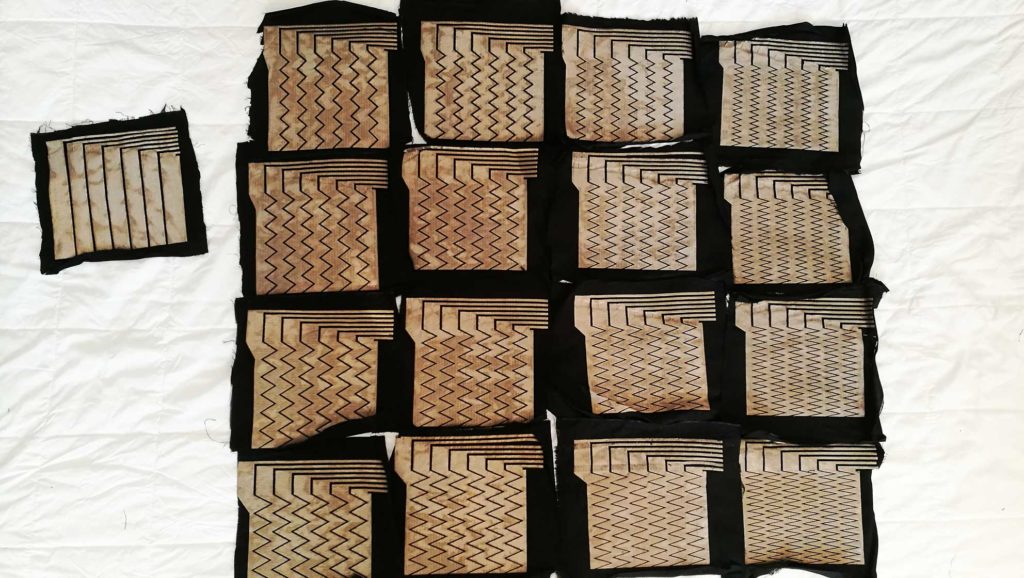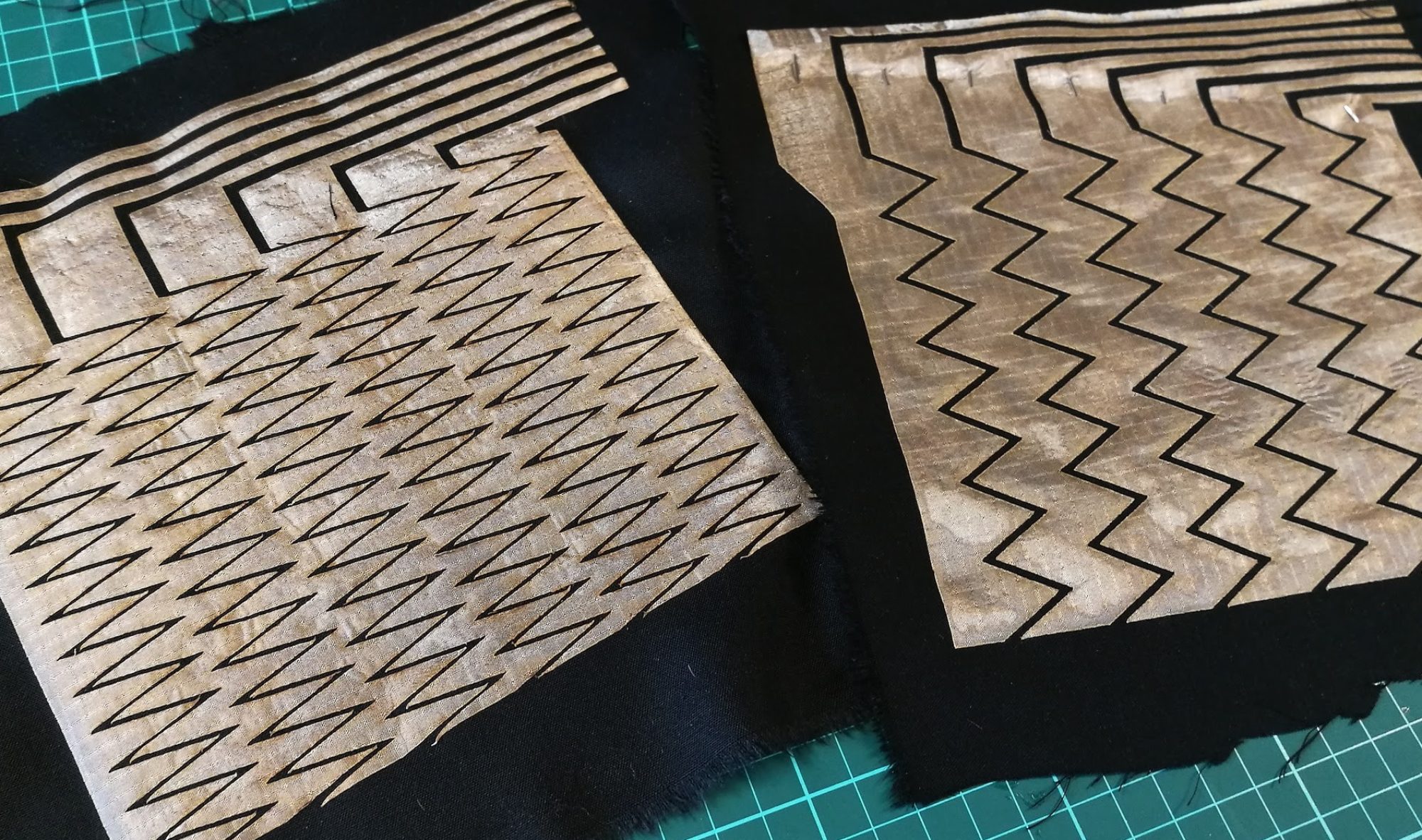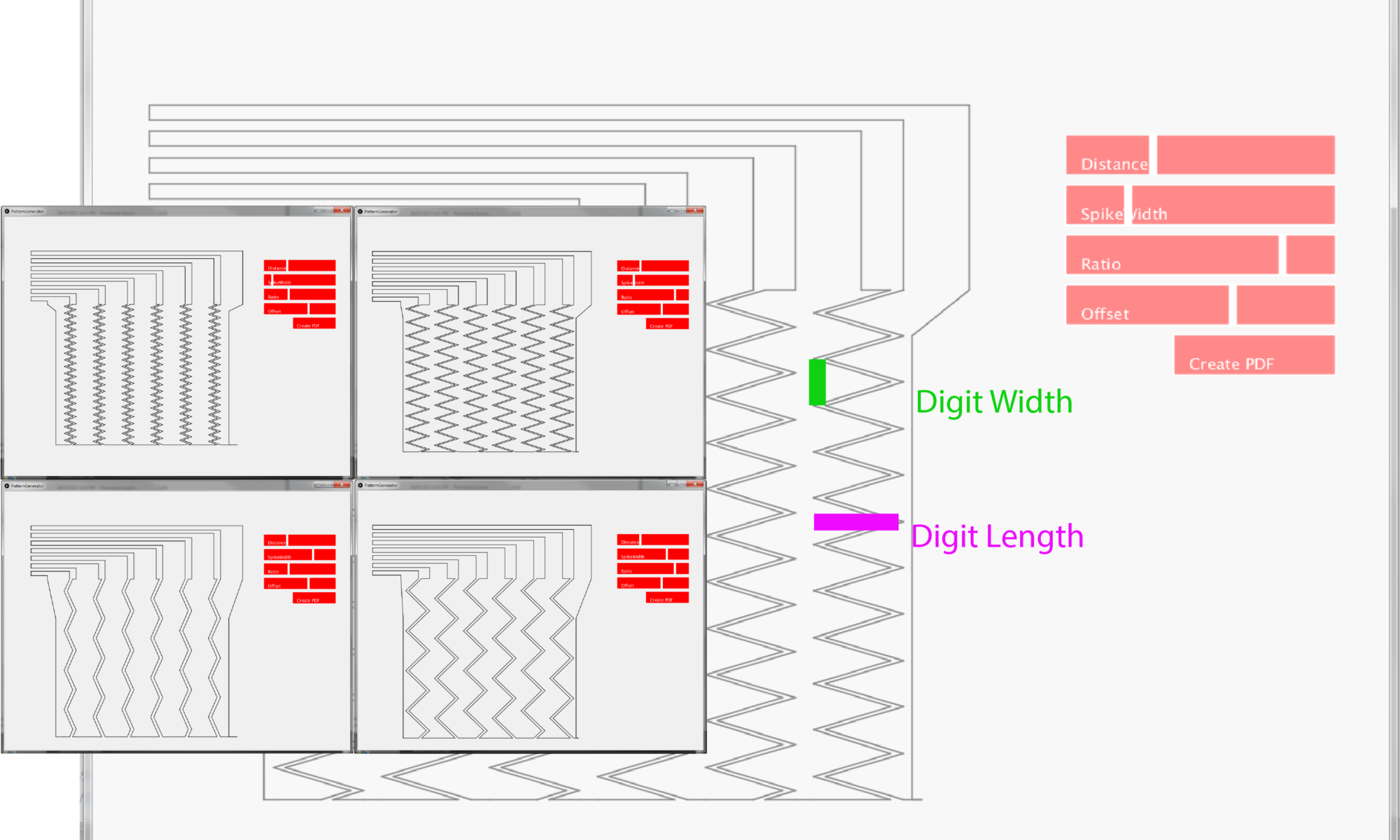
We wrote a Processing Sketch for parametrically generating interdigitated patterns. We decided that the parameters most interesting to us were digit width and digit length (as seen in the large image above).
Though many more parameters could be manipulated, feel free to test our pattern generator.
Digit Length
As we showed in our discussion of the touch-sizes, there is a periodic interaction between touch-size and strip width. Increasing the length of the digits changes the effective strip width and effects these patterns. In the 5 graphs below, we plot the change in sensor readings between each consecutive position (normalized on a scale of 0 to 1). We see that when using 150% touch size (375mm) there are large gaps with hardly any change in signal for the non-interdigitated sensor (top). As we add increasingly longer digits, the change becomes more consistent until, at 100% digit length, the change is almost constant.
We did not find a main effect for this, as the effect of digit length interacts with the touch size – in other words, on average, digit length did not make a difference, however, for the large size, increasing digit length improved the accuracy of the readings.
Digit Width
Digit Width had a strong effect on the results: the narrower the digit, the higher the accuracy and precision. The effect on accuracy is relatively small, while the effect on precision is very large. The larger the touch size, the stronger the benefit of small digit widths.
Below we show the comparison between sensors of a fixed digit length and varying digit width. The thinner the digits, the less variability can be found in the results.
On average, sensors with a digit width < 55% produce results with higher accuracy then non-interdigitated sensors. The precision of the interdigitated sensors is – on average – worse then for a non-interdigitated sensor, however, the trend suggests that, if the digits are thing enough, the precision of the non-interdigitated sensor can eventually be matched.
The figures above show the effects on Precision (left) and on Accuracy (right)


